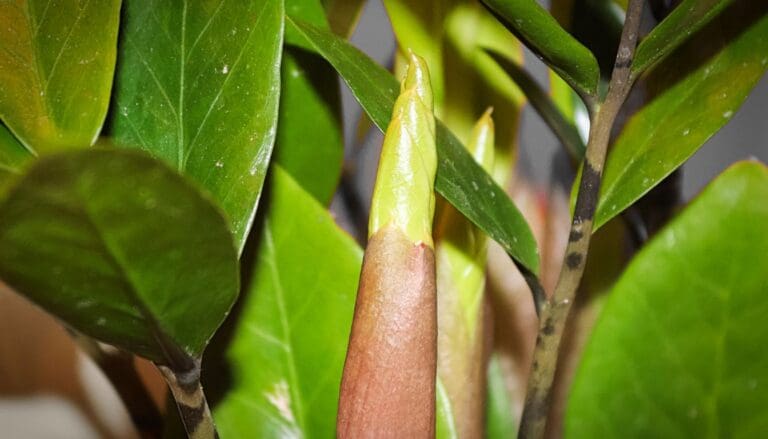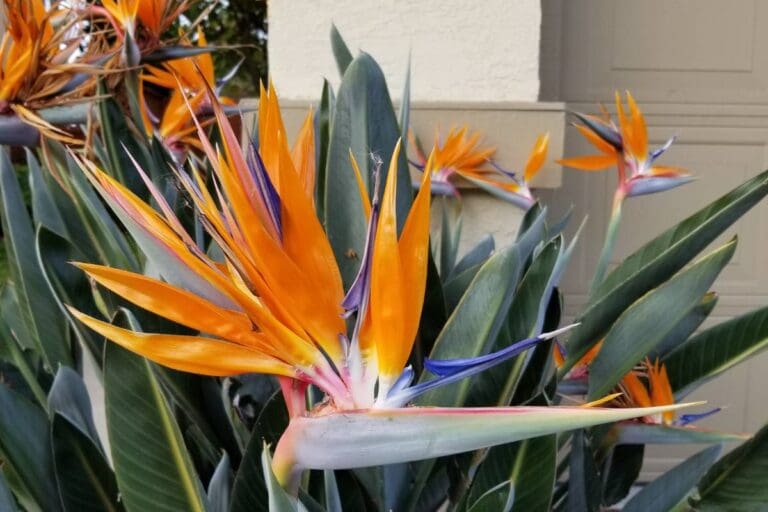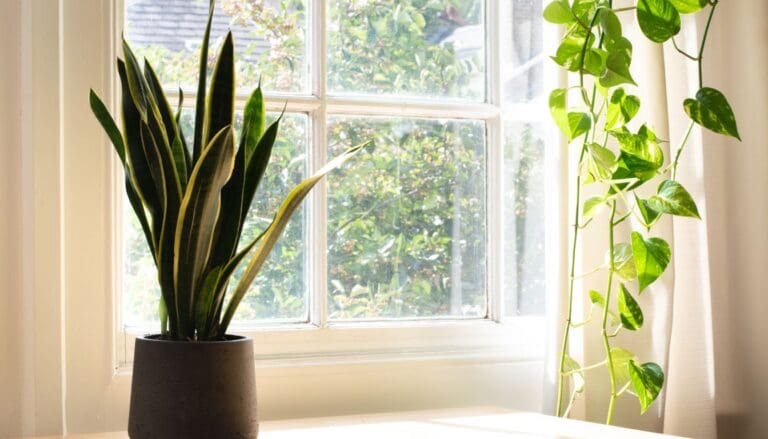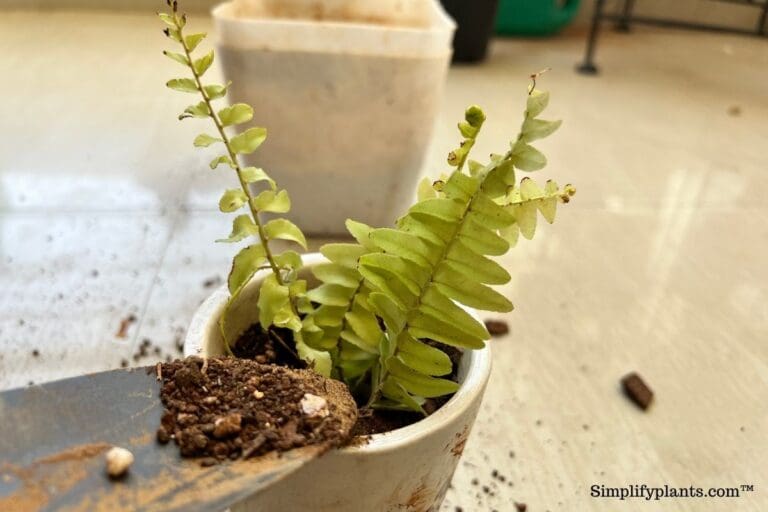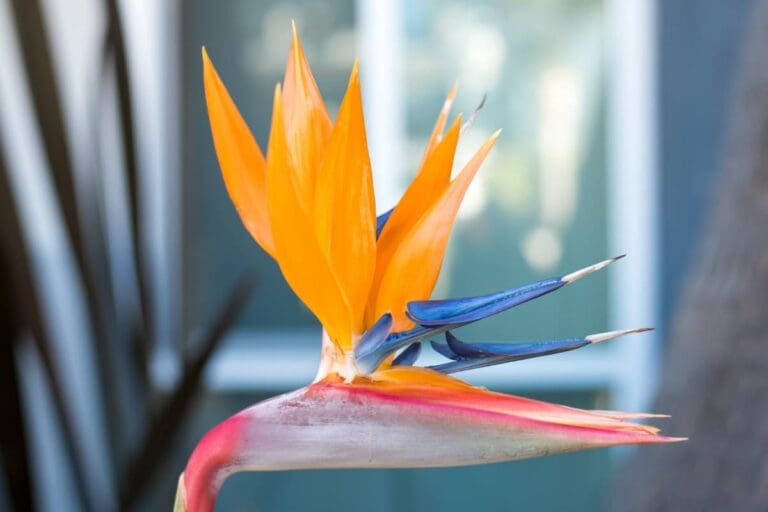How Fast Does Peperomia Grow? (+Factors Affecting Growth)
Peperomia, also known as radiator plant, is a large Genera of perennial epiphytes that mainly occur in the tropical and subtropical regions. Some species of Peperomia with attractive foliage are incredible houseplants for beginners as they are easy-going and require little care. However, if you are getting a peperomia for your house, you might be wondering how fast it grows. That’s what we will discuss in this article.
In general, peperomia can grow anywhere between 24-48 inches every year. Peperomia does well in temperature ranging between 65-80°F and relative humidity of 40-50%. Ensure you keep the plant in bright indirect light and fertilize it once a month to achieve the desired growth.
Peperomia is an excellent choice for beginners for its great tolerance to some negligence, making it one of the easiest houseplants to grow. But if you can pay a little care to fulfill its basic needs, you will witness accelerated growth in your plant.
We will dive deep to find the growth rate of the peperomia plant and the factors that affect its growth.

Please note: Simplify Plants is reader-supported. Some links in the post are affiliate links and I get a commission from purchases made through links in the post.
How Big Will a Peperomia Grow?
Consisting of more than 1000 species in the genus, Peperomia ( Peperomia spp.), plants’ size ranges between 6-12 inches in height and 6-18 inches in width.
These plants usually remain small and compact that makes them an ideal choice as indoor plants.
Factors that affect the growth rate of peperomia plants
Every plant shows an optimum growth rate in an ideal environment provided with proper growth factors.
If you keep track of the external factors that affect the growth of your peperomia plant, you will witness rapid growth in your plant. Some common factors that affect the growth of peperomia plants are:
- Light
- Water
- Fertilization
- Temperature and humidity
- The size of the pot
- Potting soil type
- Pruning
- season
Let’s understand these in more detail.
Light

Light is fundamental and one of the essential factors for the growth of a plant as it promotes photosynthesis, a biochemical process for the production of food, and the provision of energy in plants’ bodies.
Peperomia plants have lush foliage, and to maintain their beauty, they require medium to bright sunlight. They are not tolerant of direct, intense light as it causes burning or drying out of the foliage.
Morning light and filtered light serve well in their growth; even 12-16 hours of artificial light serve the purpose. Always try to choose a shady outdoor spot if you are placing it outside.
Although it requires indirect and diffused sunlight, insufficient light can result in fewer leaves, dropping leaves, and discoloration. This can also slow down the growth of your peperomia plant.
Choose a soft-lighted corner in your house and place your peperomia there and watch it thrive beautifully.
Keep your peperomia away from direct harsh sunlight as that can scorch the leaves and cause sunburn. It is impossible to revive the scorched foliage, and the stress of sunburn can lead to stunted growth.
Also read: What Kind Of Light Do Peperomia Need? (Peperomia Light Requirements)
Water

From germination to photosynthesis and the transport of food particles, water serves as the primary medium of transport in plants, and watering is an essential factor that can induce the growth of a plant. However, mishandling the proper ways of the watering can lead to the death of a plant.
Peperomia has succulent leaves, indicating a minimal water need. Overwatering can cause severe hazards to the health of the plant.
Both overwatering and underwatering can affect the growth of the plant. Your plant can develop diseases when it is overwatered and will get stressed if underwatered. Both these conditions will slow down the growth of peperomia.
Tips on watering:
Try to follow the essential tips to carry on with the proper watering procedure:
- Water every 1 or 2 weeks after checking the moisture level of the topsoil.
- Allow the surface soil (topsoil) to dry out between watering.
- Increase the watering frequency with increased light and temperature.
- Reduce the watering in the winter months.
- Get a pot with a drainage hole.
- Overdrying of the potting mix should be avoided as it causes drooping of the stems.
Even if you are following the strategic watering pattern, check the soil frequently as weather conditions and seasonal factors affect the water-retaining capacity of the soil.
Overwatering of the peperomia plant can cause root rot, mushy stems, or fungal infection. In case you are a beginner, you must use a moisture meter to check the moisture before watering your peperomia plant.
Also read: How Often To Water Peperomia? (Peperomia Water Requirements)
Fertilization

As stated earlier, peperomia plants are easy-going and can deal with less nutrient supply. When it comes to fertilizing the plant, less is more.
A balanced NPK (Nitrogen, Phosphorus, Potassium) is sufficient for its growth. Iron is another vital supplement for its growth. Use a 20:20:20 ratio of NPK along with iron supplements.
Application of a diluted mixture of fertilizers every two weeks, especially during the spring and summer months, is needed. Reduce the rate to half during the winter season.
Strictly avoid applying fertilizers to the leaves as it clogs the stomata ( pores in the leaves for gaseous exchange), apply it to the soil near the root region.
The best part of peperomia is that it can sustain itself in low or even no nutrient supply, being a slow-growing epiphyte. However, for the rapid growth of this plant, fertilization is the best option.
Also read: Do Peperomia Plants Need Fertilizer? (+Best Fertilizer Pick)
Temperature and humidity

Peperomia is a tropical- subtropical plant, and for this reason, it prefers a warm and steamy environment, especially during its growth phase during the summer months.
The radiator plants thrive well when they are provided temperatures between 55 and 75 degrees Fahrenheit. Their growth slows down with a decrease in temperature levels.
A word of caution, these plants do not like cold temperatures and cannot be retained below 30 degrees Fahrenheit as it hinders their growth altogether.
Peperomia plants do not need extra humidity, and average household humidity serves well for their growth. They are content with an average of 40-50% moisture content.
To increase the ambient humidity during winter, you can install a small-scale humidifier near the plant. Placing the pot in a water-filled tray with pebbles can also serve the purpose.
You must give special care during the cold, dry winter season to maintain a constant temperature and moisture level for the plant.
Also Read: Do Peperomia Like To Be Misted? (+Humidity Guide)
Size of the pot

Selecting the right size pot for your plant is an important step in plant parenting. But the good news with the peperomia plant is, it can live for years, even in a relatively small pot.
One basic tip to keep in mind while selecting a pot for peperomia is that it must have suitable drainage holes.
Terracotta pots, being porous, are excellent choices for peperomia.
Most peperomia species adjust themselves in 4” pots or similar. Only a few species like P. polybotrya are exceptional, demanding larger pots.
While moving your peperomia seedling from the pot, upgrade to a 2” deeper and broader pot.
Repotting is generally not required for this epiphytic genus. You can keep it in the same pot until you see roots coming out from the drainage holes. Take extra caution while repotting as they have highly delicate roots.
You will notice stunted growth if you don’t repot the peperomia even after noticing the roots coming out of the drainage holes. The roots don’t have enough space in the pot for further growth or even proper functioning once you have a root-bound plant.
Never forget that peperomia tends to prefer smaller containers over larger ones.
Also read: What happens when you put a plant in too big of a pot?
Potting soil type

Soil is one of those elementary factors in the growth process of plants that provide continuous nutrients and water supply.
Peperomia plants are generally epiphytes; thus, they have a small root system and generally settle in the nook of the trees, sending their roots in decaying barks.
You must consider the needs of the peperomia plants before selecting the soil type, as choosing the wrong soil mix will result in poor growth and the development of diseases and infections.
Here are some tips that are needed to be kept in mind while selecting the soil mix:
- The pot soil mix must be loose, chunky, and slightly acidic to mimic the soil type in the wild where peperomia generally thrives.
- Overwatering acts as a curse to the growth of peperomia. Thus the soil must be well-draining and loose to provide passage for the water to sip down.
- Another key point to remember while preparing the soil mix is the sufficient addition of 50% peat moss and 50% perlite, gravel, or sand to the mix for proper air circulation as peperomia roots need adequate oxygen.
- Well-draining potting soil keeps Peperomia healthy with glossy and vibrant foliage.
Also read: What Kind Of Soil Does Peperomia Need? (+Best Soil Mix)
Pruning

Light pruning can be done to peperomia plants during spring to avoid any leggy growth. You can use hand pruners to remove the first set of leaves in each stem.
Pruning during the early spring months gives them a bushier appearance preserving their ornamental look.
Lack of pruning will not only make your peperomia look messy but also slow down its growth. Pruning can boost growth by increasing the growth hormones.
Tips for pruning
Consider these points before pruning your peperomia plant.
- Prune your Peperomia plant during spring if only any sparse growth is seen.
- To prevent any pathogen attack, soak the shears in a dilute bleach mixture before using it for cutting.
- Pinch off dead and yellow leaves to keep your plant healthy and fresh.
- Avoid pruning in the winter season.
This kind of annual pruning process stimulates the healthy growth of the plant.
Season
These slow-growing, low-maintenance plants can be grown anytime as indoor plants, but they thrive fully during the spring season.
Proper pruning and fertilization during the growing season stimulate rapid growth in the peperomia species.
The growth rate of these epiphytes slows down in the winter season with a rapid fall in temperature and humidity. Low light during the winter months also hinders their growth.
Don’t panic if you notice a change in the growth pattern of the peperomia plant during winter, as this is normal. You must care for the plant and wait for the growing season to arrive to notice more growth again.
Reduce the watering frequency and do not use fertilizer during the winter as the plant remains dormant. Resume the regular watering and fertilizing processes in the spring and summer seasons.
How to Make Your Peperomia Grow Faster?

You might be interested in making your peperomia bigger and don’t know what steps will help you in that. Don’t worry. We will simplify it with the following steps:
- Repot your peperomia in a larger pot. A larger pot will provide more space for root growth that will in turn help your peperomia grow larger.
- Don’t forget to use a well-draining soil mix that allows excess water to sip away. You can add elements like perlite, sand, or pumice to make the soil well-draining.
- Fertilize your peperomia twice a month during its growing season. Use a balanced liquid fertilizer and apply a diluted dose to the plant.
- Water the peperomia thoroughly so that water reaches all the roots which will encourage the growth of the plant.
If you take proper care of your peperomia by providing the right amount of water, fertilizer, and light, you will be able to notice a spike in its growth. Avoid overwatering or relocating the plant too often as that can stress the plant.
If you keep relocating the plant to different spots, its energy will go in adjusting with the new location and recovering from stress every time you move it. The plant will not be able to focus on new growth. So, if you want to grow your peperomia bigger, avoid this.
Can I keep my peperomia small?

Peperomia is usually compact and doesn’t take up a lot of space, but if you want to keep it smaller and not let it grow bigger than the desired size, you can follow these steps.
- Plant your peperomia in a small pot. A small pot will not encourage the roots to grow too big or large.
- If your peperomia becomes root-bound, you can trim the roots and prune the excess stems and leaves and repot the plant in the same pot. Don’t trim more than one-fourth of the roots as that can stress the plant.
- Pruning the peperomia will help it remain small.
How to prune peperomia?
Pruning is the best method used to keep the plant in shape and prevent its overgrowth. The best time to prune a peperomia is during spring or early summer.
Keep garden shears or pruners handy before you start pruning your peperomia. Make sure to sterilize them before and after use to prevent the spread of diseases or infections.
- Observe the plant and try to find a spot within the branches that create a V shape.
- Prune the branch half-inch above the V shape.
- Keep doing these on all the branches that you want to eliminate.
- Don’t go overboard with this and don’t prune more than half of the plant’s size.
Final words

Peperomia plant species can easily be grown in both outdoor and indoor spots. The low maintenance needs and easy propagating processes make them ideal for beginners.
However, you should keep track of the few factors mentioned above for the healthy growth of your favorite peperomia.
As many species come under this single genus, the requirements vary slightly from plant to plant. Experient with their needs and evaluate your knowledge regarding their growth factors by trying out different strategies.
Ref: University of Florida, Sage Journal, University of Vermont, New Jersey Agricultural Experiment Station
Rutgers, The University of Arkansas, Britannica, Wikipedia, Peperomia Diseases, NC State University.
Recommended Garden Supplies
| Product Image | Our Recommended Gardening Supplies | Check Offers! |
|---|---|---|
Top Top
Top
Top
Top
Top
Top
Top
Top | rePotme Houseplant and Tropical Classic Potting Soil Mix | Check Offer On Amazon |
 Top
Top
Top
Top
Top
Top
Top
Top | Espoma Organic Indoor Plant Food | Check Offer On Amazon |
 Top
Top
Top
Top
Top
Top
Top
Top | GooingTop LED Grow Light 6000K Full Spectrum Clip Plant Growing Lamp | Check Offer On Amazon |
 Top
Top
Top
Top
Top
Top
Top
Top | Soil Moisture Meter | Check Offer On Amazon |
 Top
Top
Top
Top
Top
Top
Top
Top | Govee Hygrometer Thermometer, Bluetooth Enabled! | Check Offer On Amazon |
 Top
Top | LEVOIT Humidifiers for Large Room(Best For Plants) | Check Offer On Amazon |
 Top
Top
Top
Top
Top
Top
Top
Top | Upgraded DIY Automatic Drip Irrigation Kit, 15 Potted Houseplants Support | Check Offer On Amazon |
 Top
Top
Top
Top
Top
Top
Top
Top | Stainless Steel Heavy Duty Gardening Tool Set | Check Offer On Amazon |
 Top
Top
Top
Top
Top
Top
Top
Top | Bonide Insecticidal Soap | Check Offer On Amazon |
 Top
Top
Top
Top
Top
Top
Top
Top | Bonide 32 oz Spray Neem Oil for Organic Gardening | Check Offer On Amazon |
 Top
Top
Top
Top
Top
Top
Top
Top | Garden Safe Fungicide | Check Offer On Amazon |

